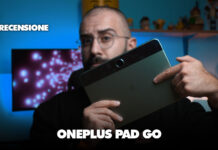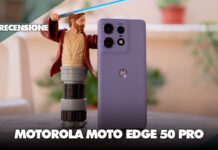Huawei P20




-
CPU: HiSilicon Kirin 970
-
RAM: 4 GB
-
Storage: 128 GB
-
Display: 5.8" Full HD+
-
Camera: 12 + 20 mega-pixel
-
OS: Android 8.1 Oreo
Info
Huawei P20 è l’ultima creazione della casa cinese presentata a Parigi lo scorso 27 Marzo 2018. Si differenzia dal fratello maggiore P20 Pro per la presenza di un display da 5.8 pollici di diagonale in tecnologia IPS LCD con formato 19:9 e risoluzione FULL HD+. Altre differenze sostanziali risiedono nella fotocamera che in questo modello è presente con un più canonico doppio modulo fotografico da 12 + 20 Mega-pixel. Gli scatti che riesce a restituire questo device sono senz’altro sopra la media, difatti il celebre portale DxOMark, che misura le prestazioni delle varie fotocamere, lo ha premiato con un punteggio di 102, un risultato decisamente eccezionale.
A bordo del device troviamo il rodato HiSilicon Kirin 970, un processore octa-core con clock di 2.36 GHz, ad affiancarlo troviamo 4 GB di RAM e 126 GB di memoria interna UFS purtroppo non espandibile tramite microSD. Lo smartphone risulta costruito completamente in metallo e vetro e nella parte frontale accoglie un preciso e rapido lettore di impronte digitali, inoltre il device è dotato anche di riconoscimento facciale. Presente inoltre la certificazione IP53 che lo rendono resistente a schizzi e a polvere.
Il dispositivo è alimentato da una batteria da 3400 mAh con supporto alla ricarica rapida SuperCharge , a muovere il tutto ci pensa la ormai nota EMUI, qui nella versione 8.1 basata su Android 8.1 Oreo.
Specifiche
Disponibilità
| Data di lancio | 27 Marzo 2018 |
Design
| Dimensioni | 149.1 x 70.8 x 7.65 mm |
| Peso | 165 grammi |
| Colori | Pink Gold, Midnight Blue, Black |
Display
| Tipo Display Technology => A number of display technologies and types used in mobile phones => TFT (Thin Film Transistor), IPS (In-Place Switching), OLED (Organic Light Emitting Diode), AMOLED (Active-Matrix Organic Light-Emitting Diode), Super AMOLED (an even advanced version of AMOLED), Resistive Touchscreen (Resistive touchscreens contain two layer of conductive material with a very small gap between them which acts as a resistance), Capacitive Touchsceen (Capacitive touchscreen technology consists of a layer of glass coated with a transparent conductor) | IPS |
| Diagonale | 5.8 pollici |
| Risoluzione | 2244 x 1080 pixel |
| Densità Pixel Pixel Density (PPI) is refers to the concentration of pixels on a particular display, measured in pixels per inch (ppi). Pixel density is calculated by dividing the diagonal pixel resolution of a display by its diagonal size, higher pixel density better display quality. | 429 PPI |
Sblocco biometrico
Hardware
| Produttore Chipset Chipset is a group of integrated circuits designed to perform one or a more dedicated functions, often with real time computing constraints, Popular smartphones are equipped with more advanced embedded chipsets that can do many different tasks depending on their programming. | HiSilicon |
| SoC | Kirin 970 |
| Frequenza | 4 × 2.36 GHz + 4 × 1.8 GHz |
| Architettura | 4 × Cortex A73 + 4 × Cortex A53 |
| GPU GPU (Graphics Processing Unit) is a single-chip processor designed to rapidly manipulate and alter memory to accelerate the creation of images in a frame buffer intended for output to a display, This includes things such as lighting effects, object transformations, and 3D motion. | ARM Mali-G72MP12 |
| RAM RAM (Random Access Memory) is a type of computer memory that can be accessed randomly, any byte of memory can be accessed without touching the preceding bytes that allows information to be stored and accessed quickly from random locations. RAM is the most common type of memory found in computer systems, smartphones, tablets and other electronic devices. | 4 GB LPDDR4X-1833 MHz dual channel |
| Memoria | 128 GB UFS 2.1 |
| Espandibilità |
Software
| Sistema Operativo OS => Every computer system run on a base software called Operating System (OS). Operating System controls all basic operations of the computer (such as smartphone, PDAs, tablet computers and other handheld devices). The Operating System allows the user to install and run third party applications (apps), apps are used to add new functionality to the device. | Android 8.1 Oreo |
| Interfaccia Utente UI or user interface of a device is the look and feel of the on-screen menu system. How it works, its color scheme, how it responds to button presses, all of these things are part of the user interface. | EMUI 8.1 |
Batteria
| Capacità Battery Capacity is a measure (typically in Amp-hr) of the charge stored by the battery, and is determined by the mass of active material contained in the battery. The battery capacity represents the maximum amount of energy that can be extracted from the battery under certain conditions. | 3400 mAh |
| Ricarica rapida | Super Charge |
| Ricarica wireless | No |
Connettività
| Bluetooth Bluetooth is a wireless communications technology for exchanging data between mobile phones, headsets, computers and other network devices over short distances without wires, Bluetooth technology was primarily designed to support simple wireless networking of personal consumer devices. | 4.2 |
| Wi-Fi Wi-Fi is a popular wireless networking technology using radio waves to provide high-speed network connections that allows devices to communicate without cords or cables, Wi-Fi is increasingly becoming the preferred mode of internet connectivity all over the world. | 802.11a/b/g/n/ac |
| GPS | GPS/A-GPS/GLONASS/Galileo/BeiDou |
| NFC NFC (Near field communication) is a set of standards for smartphones and similar devices to establish peer-to-peer radio communications with each other by touching them together or bringing them into proximity, usually no more than a few inches. | |
| USB | Type-C 3.1 |
| Uscita Video HDMI (High-Definition Multimedia Interface) is a compact audio/video interface for transferring uncompressed video data and compressed or uncompressed digital audio data from a HDMI-compliant source device to a compatible computer monitor, video projector, digital television, or digital audio device. | |
| Radio FM | |
| Infrarossi Infrared connectivity is an old wireless technology used to connect two electronic devices. It uses a beam of infrared light to transmit information and so requires direct line of sight and operates only at close range. |
Audio
| Speaker | Inferiore |
Fotocamera
| Sensore | apertura f/1.8 - f/1.6 |
| Stabilizzazione | Yes |
| Autofocus | Sì |
| Video | 4k a 30fps, 1080p a 30/60fps, 720p a 960fps |
| Selfie camera | 24 mega-pixel |
Offerte
Amazon
eBay
Huawei P20 è l’ultima creazione della casa cinese presentata a Parigi lo scorso 27 Marzo 2018. Si differenzia dal fratello maggiore P20 Pro per la presenza di un display da 5.8 pollici di diagonale in tecnologia IPS LCD con formato 19:9 e risoluzione FULL HD+. Altre differenze sostanziali risiedono nella fotocamera che in questo modello è presente con un più canonico doppio modulo fotografico da 12 + 20 Mega-pixel. Gli scatti che riesce a restituire questo device sono senz’altro sopra la media, difatti il celebre portale DxOMark, che misura le prestazioni delle varie fotocamere, lo ha premiato con un punteggio di 102, un risultato decisamente eccezionale.
A bordo del device troviamo il rodato HiSilicon Kirin 970, un processore octa-core con clock di 2.36 GHz, ad affiancarlo troviamo 4 GB di RAM e 128 GB di memoria interna UFS purtroppo non espandibile tramite microSD. Lo smartphone risulta costruito completamente in metallo e vetro e nella parte frontale accoglie un preciso e rapido lettore di impronte digitali, inoltre il device è dotato anche di riconoscimento facciale. Presente inoltre la certificazione IP53 che lo rendono resistente a schizzi e a polvere.
Il dispositivo è alimentato da una batteria da 3400 mAh con supporto alla ricarica rapida SuperCharge , a muovere il tutto ci pensa la ormai nota EMUI, qui nella versione 8.1 basata su Android 8.1 Oreo.




















